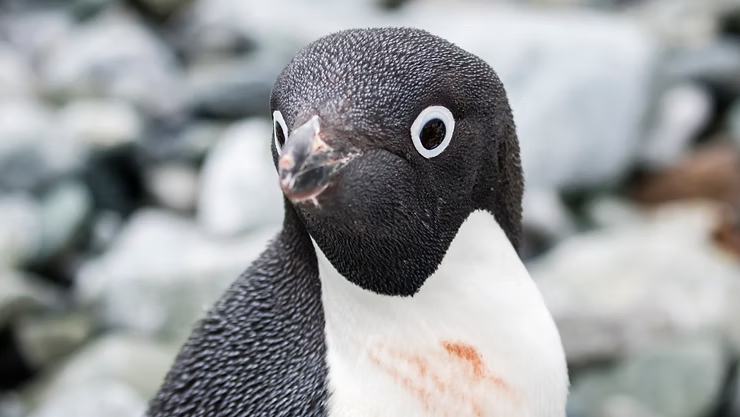Adélie Penguins: Fascinating Birds of the Antarctic
Adélie penguins are flightless birds inhabiting the icy landscapes of Antarctica. Known for their tuxedo-like appearance, these birds display remarkable adaptations, behaviors, and survival skills. From diving deep into Antarctic waters to forming bustling colonies, Adélie penguins captivate scientists and nature enthusiasts alike. Here are the top 10 facts about Adélie penguins, highlighting their unique traits and the importance of conservation.
Key Takeaways
- Adélie penguins are flightless birds living exclusively in the Southern Hemisphere, mainly Antarctica.
- They are expert divers and skillful swimmers, capable of diving to great depths.
- Adélie penguins are social creatures with unique personalities, living in large colonies.
- They engage in fascinating mating rituals, including pebble-giving courtship and nest building.
- Conservation efforts are crucial to protect Adélie penguins and their fragile habitats.
The Tuxedo-Wearing Birds of Antarctica
Standing about a foot tall, Adélie penguins have a distinctive black-and-white coloration with hints of orange and yellow on their head and neck. They feast on fish, krill, and squid, consuming roughly 1.5 million metric tons of krill annually. These birds thrive on ice shelves and along coastlines, demonstrating incredible survival skills in Antarctica’s extreme environment.
Masters of the Antarctic Waters
Adélie penguins are exceptional swimmers, diving up to 550 meters (1,800 feet) to catch prey. Their streamlined bodies and webbed feet allow them to glide effortlessly, change direction quickly, and navigate using landmarks and the Earth’s magnetic field. Their agility makes them one of the most graceful creatures in Antarctic seas.
Social Creatures with Unique Personalities
- They form large breeding colonies and communicate through vocalizations and body movements.
- Curious and playful, they engage in interactive behaviors with colony members.
Surviving Harsh Environments
- Feathers: Thick layers provide insulation in freezing temperatures.
- Blubber: Fat layers offer warmth and energy during food scarcity.
- Huddling: Penguins gather in large groups to conserve body heat.
- Nesting: Parents carefully protect eggs and chicks in harsh conditions.
Diet: Fish and Krill
Adélie penguins are skilled hunters, primarily eating krill, fish, and squid. Their streamlined bodies and powerful flippers make them agile in pursuit of prey.
Mating Rituals and Family Life
Adélie penguins form monogamous pairs during breeding season. Courtship involves bowing, pointing, and vocalizations. Both parents incubate eggs and feed chicks until fledging, ensuring survival in extreme climates.
Conservation Importance
- Ecosystem Balance: Penguins regulate marine food chains and maintain ecological health.
- Biodiversity: Protecting them preserves Antarctic species diversity.
- Climate Indicators: Penguin populations reflect environmental changes due to global warming.
Modern Threats
- Predators: Sea lions, orcas, and leopard seals pose risks during feeding.
- Climate Change: Melting ice and rising sea levels disrupt habitats.
- Food Availability: Penguins adjust diets based on prey availability, highlighting environmental sensitivity.
Fascinating Facts & Trivia
- Penguins have special glands above their eyes to remove salt from seawater.
- They are athletic swimmers, reaching speeds up to 15–22 mph.
- Penguins have 18–20 species, mostly in the Southern Hemisphere.
- Parents alternate incubating eggs and feeding chicks until fledging.
- Celebratory days include Penguin Awareness Day (Jan 20) and World Penguin Day (Apr 25).
Frequently Asked Questions
- Where do Adélie penguins live? They inhabit Antarctica’s coastline on ice shelves and landfast ice.
- What do they eat? Primarily fish, krill, and squid, caught through skilled diving.
- How do they reproduce? Build pebble nests, form colonies, and share parental duties.
- Threats? Climate change, predators, overfishing, and human disturbance.
- How do they survive harsh environments? Dense feathers, blubber, and huddling conserve warmth and energy.
- Social behavior? Highly social; communicate via vocalizations and body language.
- Lifespan? Typically 10–20 years, occasionally up to 30 in the wild.
Conclusion
Adélie penguins are remarkable creatures that thrive in extreme Antarctic conditions. From diving to courtship rituals, these birds demonstrate resilience, agility, and social complexity. Protecting them helps preserve Antarctic ecosystems and highlights the intricate balance of our planet’s biodiversity.

